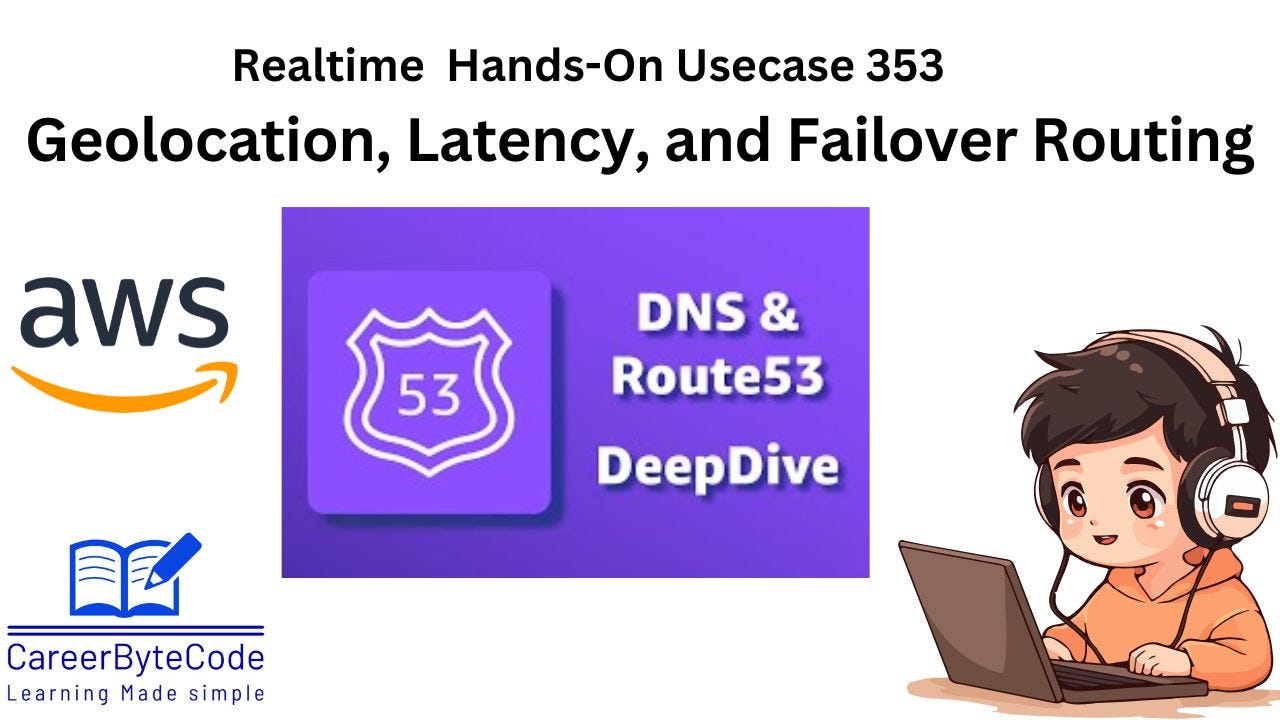Mastering AWS Route 53: A Deep Dive into DNS Routing Policies for Global Applications
Demonstration of different types of DNS Routing policies.
1. Why we need this use case:
Amazon Route 53 is a scalable and highly available Domain Name System (DNS) service designed to route end-user requests to various applications and resources hosted on AWS or other environments. It supports multiple routing policies to optimize traffic delivery based on different requirements. This use case is important for:
Load Balancing: Efficiently distributing traffic to multiple resources based on various metrics (such as weights, latency, or geographic location).
High Availability: Ensuring that traffic is automatically rerouted to healthy resources, reducing the chances of downtime and improving application reliability.
Global Performance: Ensuring low-latency routing and a more personalized experience for users, regardless of their location, using geolocation-based routing.
Cost Efficiency: Offering flexibility to balance traffic loads among resources to optimize performance and costs.
By exploring the different routing policies available in Route 53 (Simple, Weighted, Latency, Geolocation, and Failover), this use case will provide you with hands-on experience in configuring and testing these policies, which are commonly used in real-world cloud architectures.
This use case demonstrates multiple routing strategies, including Simple, Weighted, Latency, Geolocation, and Failover routing. It allows users to understand how to configure these policies effectively for real-world applications, improving site reliability, performance, and resilience to failure.
Each routing policy has unique use cases and advantages depending on application needs, such as global distribution, load balancing, or failover scenarios. By exploring these types of routing, users gain valuable experience in implementing intelligent traffic management, which is critical for both small and large-scale applications.
2. When we need this use case:
Detailed Explanation: This use case is crucial when:
Handling High Traffic: When managing large-scale applications with multiple instances or resources, Route 53 can efficiently distribute traffic to ensure smooth performance.
Ensuring Application Availability: In situations where high availability is crucial (e.g., e-commerce platforms), implementing failover routing ensures that traffic can automatically switch to backup servers when primary resources are unavailable.
Global Applications: When targeting users across the globe, it’s important to route traffic based on proximity or region, ensuring low latency and better user experience. Geolocation and latency routing policies are especially useful for this.
Optimizing Load Balancing: If you want to manage traffic distribution among instances based on certain criteria (e.g., giving priority to certain regions or instances), weighted routing helps in creating efficient traffic management strategies.
Simplifying Infrastructure Management: Route 53’s integrated health checks ensure that traffic is sent only to healthy resources, reducing the complexity of managing application availability manually.
This use case is essential when you need to:
Distribute Traffic Efficiently: Ensure optimal traffic distribution across multiple resources and regions.
Improve Application Performance: Leverage latency-based or geolocation routing to direct users to the fastest and most suitable server.
Ensure High Availability: Implement failover routing to maintain service continuity even when certain resources are unavailable.
Control Traffic Based on Priorities: Route traffic in a way that aligns with your business priorities using weighted routing.
Customize User Experience: Tailor content delivery to users from specific regions using geolocation routing policies.
This use case is particularly beneficial for businesses with a global presence that require seamless traffic distribution and resilience across regions, or for developers seeking practical experience with Route 53's robust DNS routing policies.




